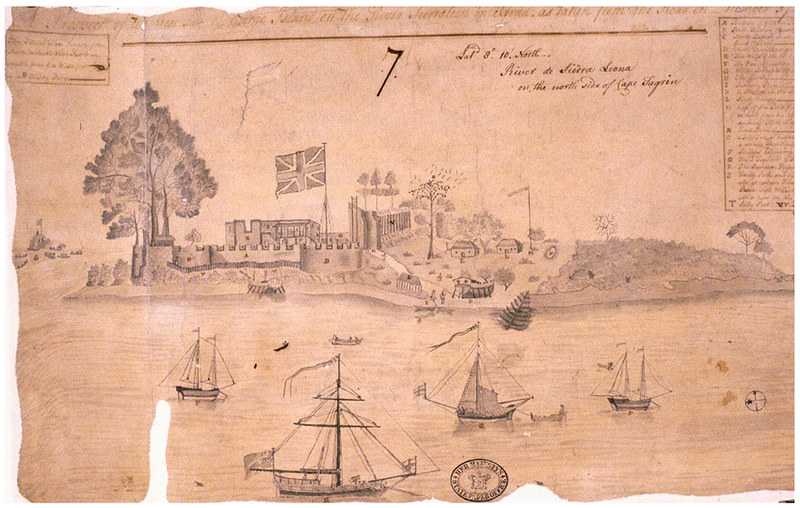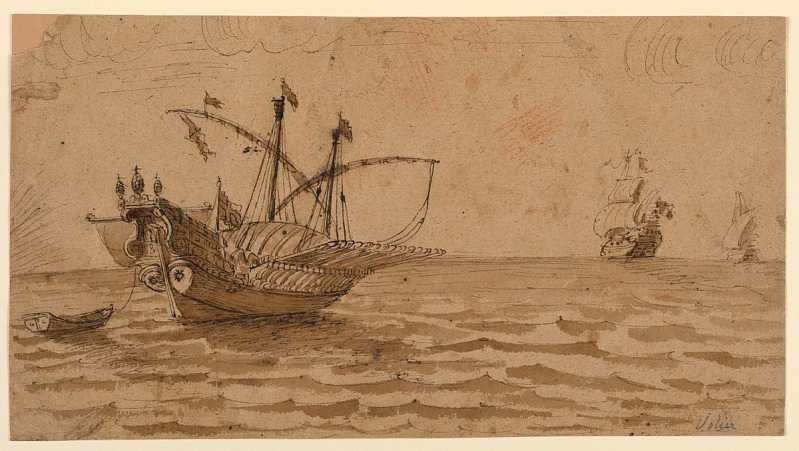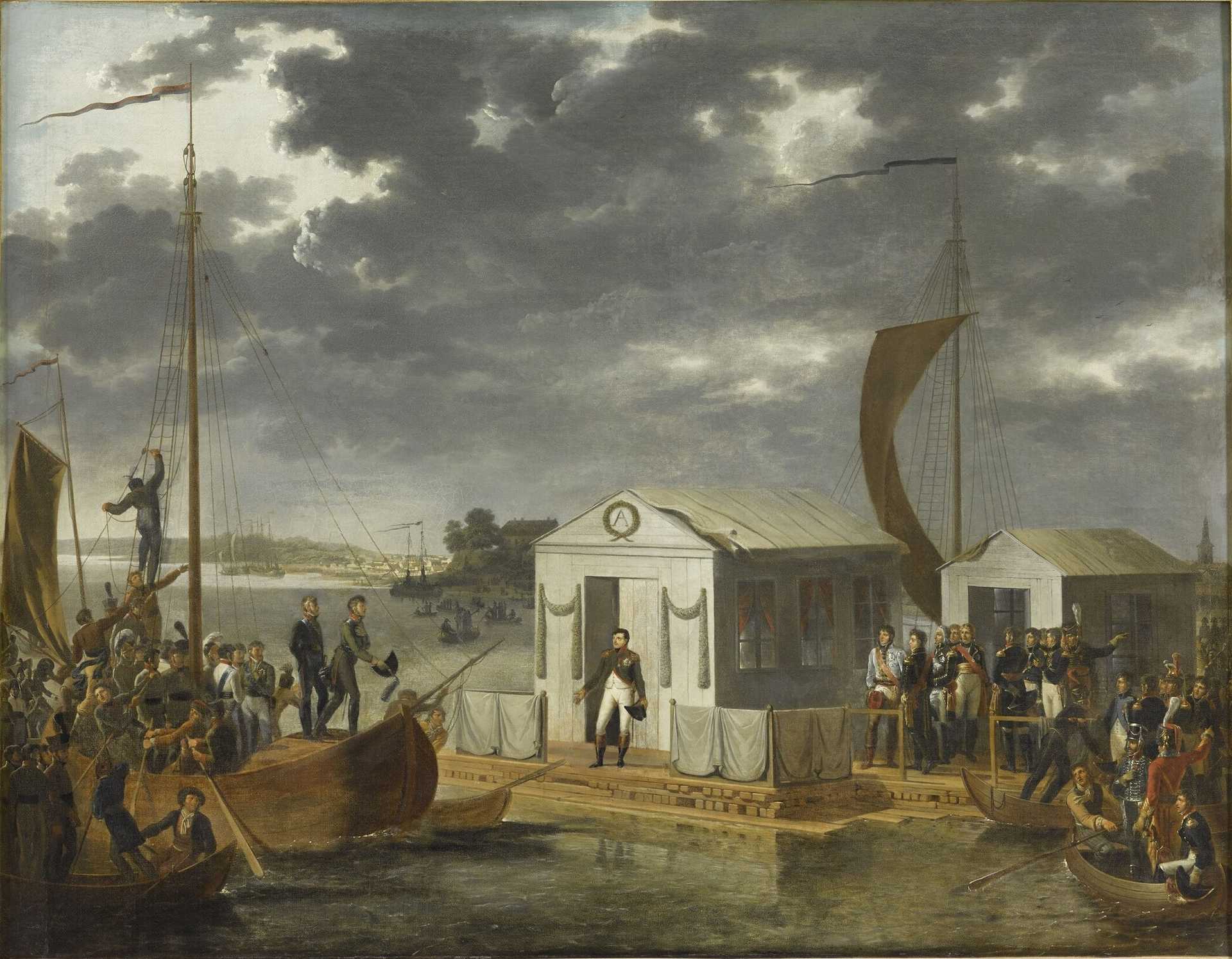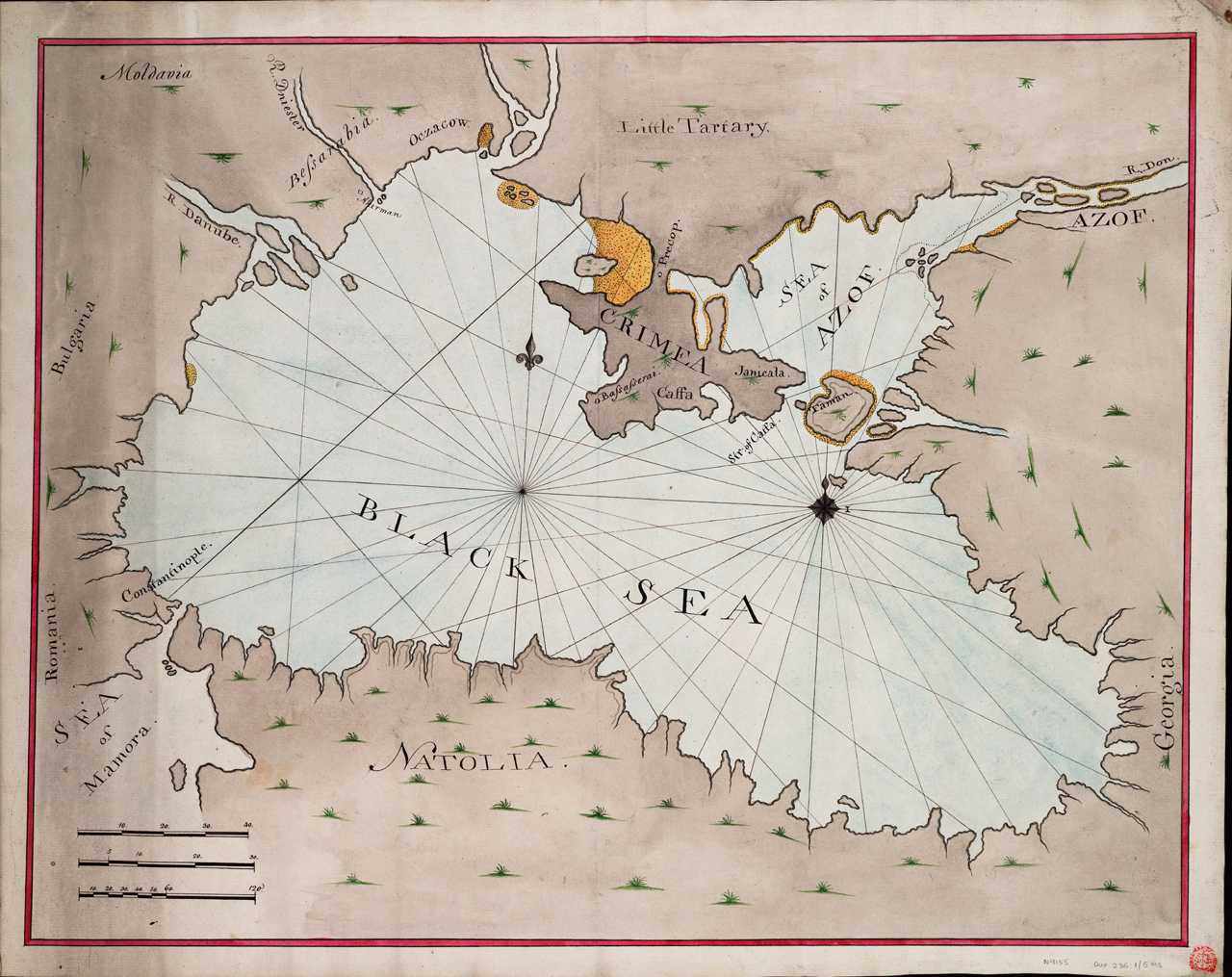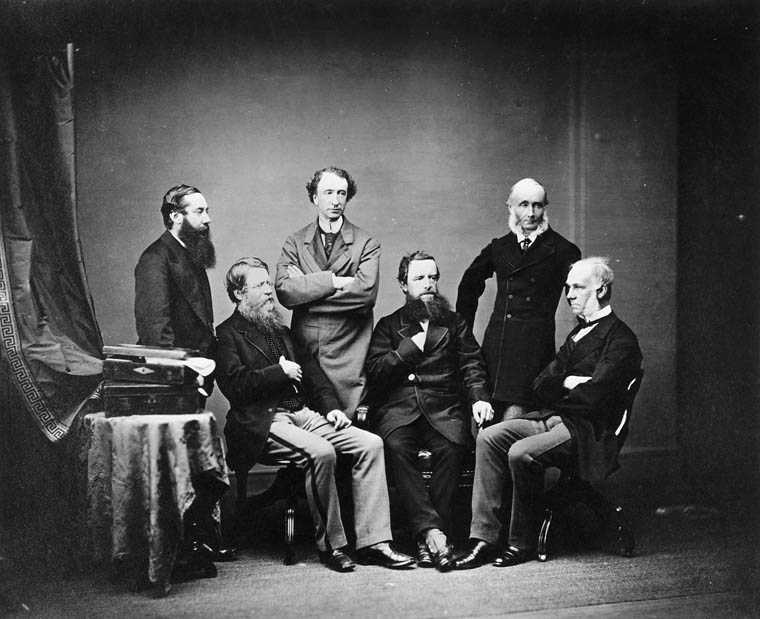Short History and Long History: Beyond the Controversy
This video debates the theory of arms control and its importance in the Post-Cold War era.
Arms Control in Ancient Times: Not Much of an Issue
Arms control practice during the Ancient World was relatively limited for several reasons.
Firstly, warfare, which was important to the cultures of many of the peoples of the ancient world, was extremely common across the world – be it in the Middle East, ancient Greece, the Roman world or pre-Han China.
Secondly, despite its highly violent nature, warfare was largely fought with unsophisticated concussion or simple cutting weaponry, which made controlling weaponry difficult.
Amphictyonic law of Delphi (4th century BC) from Aegina. vue d’ensemble © Musée du Louvre / Maurice et Pierre Chuzeville (public domain)

Fresco of an ancient Macedonian Greek heavy infantry soldier wearing mail armour, 3rd century BC.
Arms Control in Ancient Times: Early Exceptions
Regulating Warfare
In the 4th century BC in ancient Greece the Great Amphityonic League established one of the first recorded attempts in arms control in the Ancient World: a set of rules for waging war. The League, an ancient religious association of Greek tribes exercised a political influence through its membership oath, which laid out a doctrine forbidding the destruction of member cities or the cutting off of water supplies – even in wartime.
Buffer Zones
Many initiatives predominantly featured the establishment of buffer regions or the disarmament of defeated Empires. In terms of establishing buffer regions, key initiatives included the establishment of a buffer between the Egyptian Rameses II and the Hittite Hattusilis III around 1280BC, or the agreement to manage the buffer state of Armenia between the Roman and Parthian Empires in 58 – 63 AC.
Disarmament Agreements
In terms of disarmament agreements, key initiatives included the Romans’ imposition of ‘unequal treaties’ (also known as foedus inaequum) on both Carthage in 201 BC and then Macdeon in 196 BC. These unequal treaties required the defeated states to accept significant disarmament measures, including the elimination of most of their navies and, in the case of Carthage, the destruction of its war elephants.
Controlling Arms Sales
During the 900s AD, the King of the Franks, Charlemagne made it illegal – and punishable by forfeiture of property or death – to sell or export swords and chain mail manufactured in the Frankish empire to foreigners.
Protection of Non-combatants
The end of the Ancient World era saw the Church, for the first time, seek to limit violence against certain classes of people and property in its 989 Peace of God – Synod of Charoux. The Peace of God ruling sought to protect non-combatants, agrarian and economic facilities, and the property of the church from war.
Arms Control in Medieval Times
In this video, you will learn:
- the context in which arms control was thought in the Middle Ages
- the place of the church in the initiatives that tried to be taken
- key examples of arms control seeking to limit violence at certain times
Arms Control in Medieval Times: Major Initiatives
- 1027
Truce of God
The Truce of God sought to improve moratoriums on fighting at certain times.
- 1041
Its prohibition on fighting on Sundays and during ‘feast days’ was extended to specific days of the week.
- 1054
The Council of Narbonne brought the Church-led peace movement to a climax, espousing the lofty, if unattainable, ideal that “no Christian should kill another Christian, for whoever kills a Christian undoubtedly sheds the blood of Christ.”
- 1063
The Bishopric of Terouanne further extended the Truce of God’s limits on the permitted timeframes for warfare and included the penalty for breaking the set restrictions was to be declared anathema and face excommunication.
- 1085–1103
Peace of the Land
The Peace of the Land for Elsass was established by local political leaders to limit violence.
- 1103
Henry IV established the Peace of the Land to limit violence and included the requirement to “keep the peace with churches, clergy, monks and merchants.”
- 1139
Council Canons
The Second Council of the Lateran agreed to Canon 29, which banned the use of crossbows against Christians.
- 1179
The third Lateran Council agreed to Canon 24, which threatened anyone who would provide the Saracens with weapons, iron and wood to build ships with excommunication.
- 1215
The Fourth Council of the Lateran agreed to Canon 71, which banned the transfer of weapons to the Saracens.
Arms Control and Thought of War in Modern Times
This video debates:
- the widespread use of the destruction of fortifications as one of the flagship disarmament measures
- the place of demilitarization as a means of ensuring strategic stability
- the impact of industrialization on the means of warfare and the first international conventions on the use of modern armaments
Major Initiatives During the Modern Era
- 1675
The Strasbourg Agreement
The Strasbourg Agreement between France and the Holy Roman Empire was the first international agreement limiting the use of chemical weapons, specifically poisoned bullets.
- 1713
The Treaty of Utrecht
The treaty included an agreement on neutralisation or neutralised areas. For example, under Article IX, the French agreed to the British demands “that all the Fortifications of the City of Dunkirk be Razed, that the Harbour be filled up, and that the Sluices or Moles which serve to cleanse the Harbour be Levelled.”
- 1715
The British-Spanish-Dutch Treaty
In 1715, the British-Spanish-Dutch Treaty was signed, which included an agreement on neutralisation.
![Historical drawing with four different sized sailing ships on the sea in front of an island. There is a fort as well as a factory on the island, the Union Jack flying above. There is also a seal and handwriting, unreadable, on the drawing.]() The National Archives UK
The National Archives UK18th century fort and factory on George Island in the river Sierra Leona
- 1787
Signing of the Anglo-French Naval Limitation Pact
Both states mutually declared that neither side would prepare any naval armaments beyond the peacetime establishment, both would limit their number of naval ships placed ‘in the water,’ and both would agree to provide preliminary notification if some different arrangement was found necessary.
![Historical ink drawing of two war ships at sea]() Pierre-Jacques Volaire via Smithsonian. Museum purchase through gift of various donors and from Eleanor G. Hewitt Fund
Pierre-Jacques Volaire via Smithsonian. Museum purchase through gift of various donors and from Eleanor G. Hewitt Fund18th century war ships at sea.
- October 27, 1787
A joint declaration was signed between Britain and France in Versailles, with both sides agreeing to discontinue armaments, and in general all warlike preparations, and that the navies of both nations shall be again placed upon the footing of the peace establishment. The declaration sought to further bolster the bilateral arms control regime in light of the growing likelihood of war over Holland.
- 1808
The Treaties of Tilsit
In 1808, two Franco-Prussian Treaties (also known as the Treaties of Tilsit) were signed, by which the Prussian army was limited to 42,000 troops for a period of 10 years from 1 January 1809 and Prussia was stripped of about half its territory.
![The historical drawing shows a river under cloudy skies, stirred by several boats. The ones in the foreground are to reach a raft where the pavillon is set up for the two rulers to meet up in.]() Adolphe Roehn, Public domain.
Adolphe Roehn, Public domain.Meeting of the Napoleaon I of France and Alexander I of Russia in a pavilion set up on a raft in the middle of the Neman River.
- 1817
Signing of the Rush-Bagot Agreement
![The historical marker set up to commemorate the Rush-Bagot Treaty reads: Peace through limitation of naval armament was promoted between the Dominion of Canada and the United States of America by the signing of the Rush-Bagot Agreement, April 28 and 29, 1817. Providing for the restriction of naval forces on the Great Lakes. This notable agreement was negotiated on behalf of Canada in the British Legation which stood on this site.]() Eoghanacht / Wikimedia Commons, Public domain.
Eoghanacht / Wikimedia Commons, Public domain.Historical marker for the Rush-Bagot Treaty in Washington, D.C., where the Rush-Bagot Agreement was negotiated.
The agreement between the US and Great Britain led to the naval demilitarisation of the Great Lakes and Lake Champlain region of North America. Under the Agreement, each side was permitted to deploy a maximum of one ship on Lake Ontario, two ships on the Upper Lakes and one on Lake Champlain, and none could exceed one hundred tons and one eighteen-pound cannon.
- 1831
Balance of Europe
In 1831, to avert major European war and preserve the ‘balance of Europe’, the five major European powers signed the Treaty of Independence and Neutralisation of Belgium. Any breach of neutrality required the active involvement of each of the powers.
- 1841
Restrictions on the Egyptian Army
In 1841, the Ottoman Turks imposed restrictions on the Egyptian army, with Egypt’s troop numbers limited to 18,000 and the Egyptians were prohibited from building ironclad warships. The Egyptian army size was increased in 1866 and 1873, but in 1879 the original limitations were reimposed.
- 1856
Signing of the Treaty of Paris
The treaty made the Black Sea neutral territory, closed it to all warships and prohibited fortifications and the presence of armaments on its shores.
![Historical map of the Black Sea and the surrounding lands.]() National Maritime Museum, Greenwich, London
National Maritime Museum, Greenwich, LondonAn early 19th century map of the Black Sea.
- 1867
Neutralization of Luxembourg
In 1867, the European powers agreed to neutralize Luxembourg. As part of the agreement, Willem III was required to dismantle its fortifications and guarantee that he would keep the territory demilitarised.
- 1871
Signing of the Treaty of Washington
The treaty between Great Britain and the US, leading to total demilitarisation and inaugurating permanent peaceful relations between the US and Canada, and the US and Britain.
![Historical black and white photography of six men in dress coats, three standing, three seated, grouping for the picture.]() Matthew B. Brady / Wikimedia Commons, Public domain.
Matthew B. Brady / Wikimedia Commons, Public domain.The British High Commissioners for the Treaty of Washington group for a picture.
- 1878
The Treaty of Berlin
The Treaty of Berlin imposed limitations on diplomatic and military action on the Lower Danube and Bulgaria.
- 1899
The First Hague Conference
The conference led to the signing of the Hague Convention of 1899. This Convention consisted of three main treaties and three additional declarations, which together established rules for declaring and conducting warfare as well as the use of modern weaponry and set up the Permanent Court of Arbitration
![The tsar, a bearded man in richly decorated uniform, poses for the photography. He holds a pair of gloves in his right hand, the left hand rests on his hat on a side table.]() Royal Collection / Wikimedia Commons, Public domain.
Royal Collection / Wikimedia Commons, Public domain.Tsar Nicholas II of Russia initiated the Hague Peace Conference of 1899.
